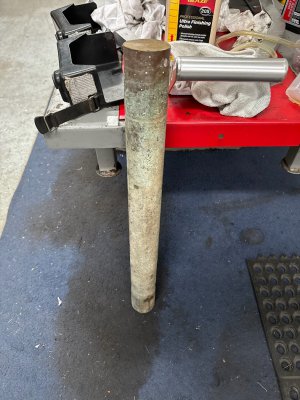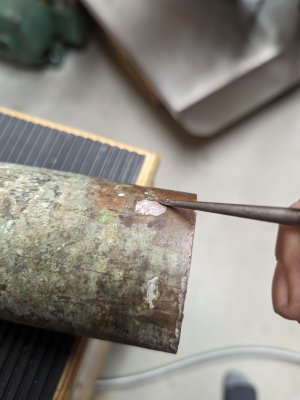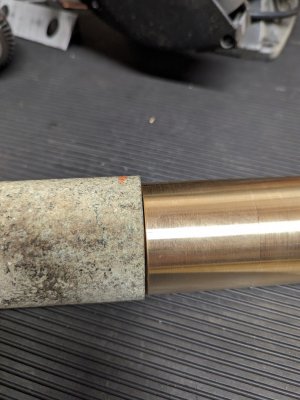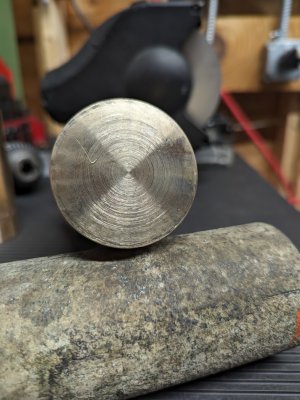- Joined
- Jun 10, 2019
- Messages
- 534
I've been gifted some metal and wanted to know more about it. I was told that this is a section of ship propeller shaft; its about 60mm (2.375") in diameter. It clearly looks bronze-ish. Some quick searching showed that there are some specific bronze alloys that are sometimes used for ship shafts; manganese bronze and nickel aluminum bronze were a couple I found.
I'm just curious if anyone could help confirm or if there's a way I can make a better guess. I realize metallurgical analysis is the only sure way to identify.
I was planning on using to make plain bearings. There are some very significant property differences as compared to typical bearing bronze (tin-bronze alloy); particularly a LOT higher tensile strength. But I'm expecting it would be fine for non-critical, garage hack-machinist stuff. So any input for application & machining: I'm all ears. I don't expect I'll ever weld/braze it.

I'm just curious if anyone could help confirm or if there's a way I can make a better guess. I realize metallurgical analysis is the only sure way to identify.
I was planning on using to make plain bearings. There are some very significant property differences as compared to typical bearing bronze (tin-bronze alloy); particularly a LOT higher tensile strength. But I'm expecting it would be fine for non-critical, garage hack-machinist stuff. So any input for application & machining: I'm all ears. I don't expect I'll ever weld/braze it.



 .
.

